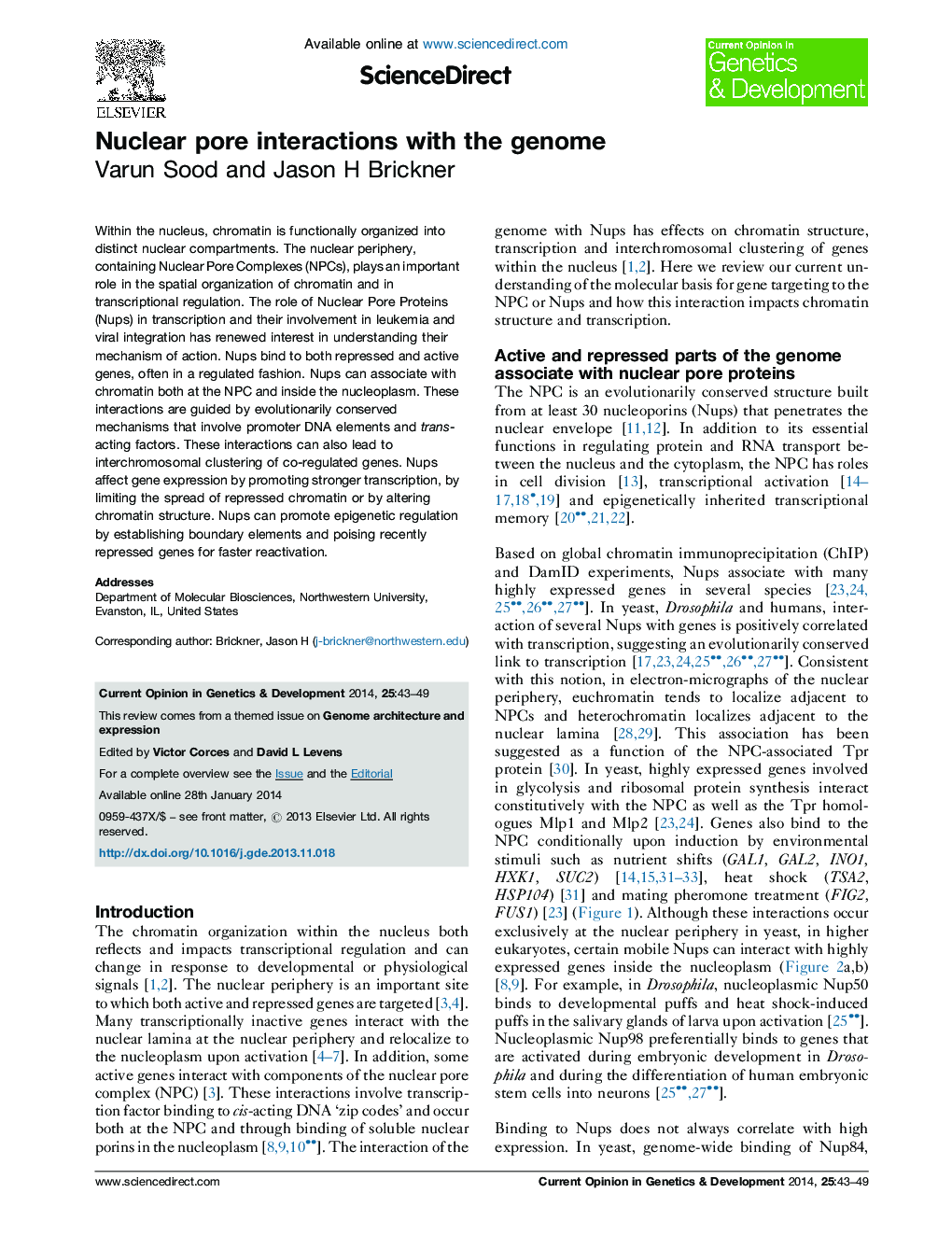| Article ID | Journal | Published Year | Pages | File Type |
|---|---|---|---|---|
| 5893541 | Current Opinion in Genetics & Development | 2014 | 7 Pages |
Within the nucleus, chromatin is functionally organized into distinct nuclear compartments. The nuclear periphery, containing Nuclear Pore Complexes (NPCs), plays an important role in the spatial organization of chromatin and in transcriptional regulation. The role of Nuclear Pore Proteins (Nups) in transcription and their involvement in leukemia and viral integration has renewed interest in understanding their mechanism of action. Nups bind to both repressed and active genes, often in a regulated fashion. Nups can associate with chromatin both at the NPC and inside the nucleoplasm. These interactions are guided by evolutionarily conserved mechanisms that involve promoter DNA elements and trans-acting factors. These interactions can also lead to interchromosomal clustering of co-regulated genes. Nups affect gene expression by promoting stronger transcription, by limiting the spread of repressed chromatin or by altering chromatin structure. Nups can promote epigenetic regulation by establishing boundary elements and poising recently repressed genes for faster reactivation.
